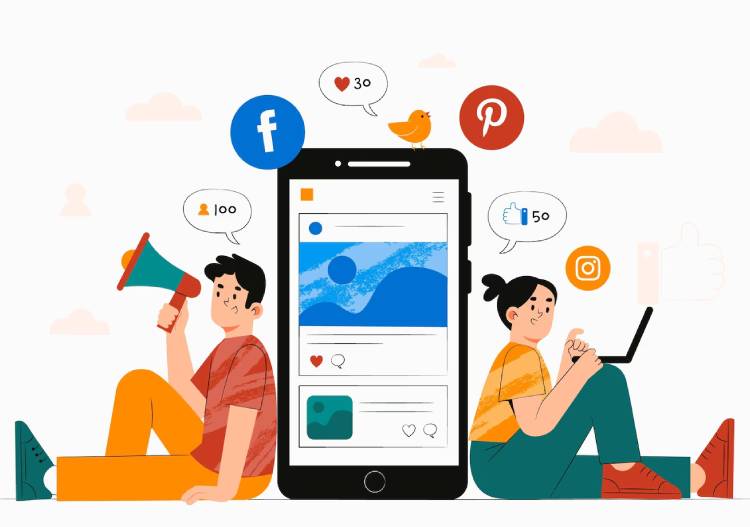- February 15, 2025
- by admin
Facebook Ads vs. Google Ads
In the world of digital marketing, two giants dominate the advertising landscape: Facebook Ads and Google Ads. Both platforms offer unique advantages and can be incredibly effective for driving business growth. However, they serve different purposes and cater to distinct stages of the customer journey. Choosing the right platform for your business depends on your goals, target audience, and budget. In this blog, we’ll compare Facebook Ads and Google Ads, highlighting their strengths, weaknesses, and ideal use cases to help you make an informed decision.
Facebook Ads: The Power of Social Engagement
What are Facebook Ads?
Facebook Ads is an advertising platform that allows businesses to create and display ads on Facebook, Instagram, Messenger, and the Audience Network. With over 2.9 billion monthly active users, Facebook offers unparalleled reach and targeting capabilities.
Key Features of Facebook Ads
Audience Targeting: Facebook’s robust targeting options allow you to reach users based on demographics, interests, behaviors, and even life events.
Visual Appeal: Facebook Ads are highly visual, making them ideal for brands that rely on imagery and storytelling to engage their audience.
Retargeting: You can retarget users who have interacted with your website, app, or Facebook page, increasing the chances of conversion.
A/B Testing: Facebook Ads allows you to test different ad creatives, audiences, and placements to optimize performance.
Strengths of Facebook Ads
Brand Awareness and Engagement
Facebook Ads are perfect for building brand awareness and fostering engagement. The platform’s social nature encourages likes, comments, and shares, helping your brand reach a wider audience.
Highly Targeted Advertising
Facebook’s detailed targeting options enable you to reach specific niches, making it ideal for businesses with well-defined customer personas.
Cost-Effective for Certain Goals
Facebook Ads tend to be more affordable than Google Ads, especially for objectives like brand awareness, lead generation, and engagement.
Visual and Creative Flexibility
With formats like carousel ads, video ads, and stories, Facebook Ads offer creative freedom to showcase your products or services in a compelling way.
Weaknesses of Facebook Ads
Lower Intent: Users on Facebook are typically browsing for entertainment or social interaction, not actively searching for products or services.
Ad Fatigue: Overexposure to ads can lead to ad fatigue, causing engagement rates to drop over time.
Google Ads: The Power of Search Intent
What are Google Ads?
Google Ads is an advertising platform that allows businesses to display ads on Google’s search engine results pages (SERPs), YouTube, and the Google Display Network. With over 5.6 billion searches per day, Google Ads connects businesses with users actively searching for their products or services.
Key Features of Google Ads
Keyword Targeting: Ads are triggered by specific keywords, ensuring they reach users with high purchase intent.
Pay-Per-Click (PPC): You only pay when someone clicks on your ad, making it a cost-effective option for driving traffic.
Performance Tracking: Google Ads provides detailed analytics, allowing you to measure ROI and optimize campaigns in real-time.
Diverse Ad Formats: From text-based search ads to video ads on YouTube, Google Ads offers a variety of formats to suit different goals.


Strengths of Google Ads
High Purchase Intent
Google Ads targets users who are actively searching for products or services, making it ideal for driving conversions and sales.
Immediate Results
Unlike SEO, which takes time to show results, Google Ads delivers instant visibility and traffic.
Scalability
Google Ads is highly scalable, allowing businesses to start small and expand their campaigns as they see results.
Retargeting Opportunities
With Google Display Network, you can retarget users who have visited your website, increasing the likelihood of conversion.
Weaknesses of Google Ads
Higher Cost: Google Ads can be more expensive than Facebook Ads, especially for competitive keywords.
Less Visual: Text-based search ads lack the visual appeal of Facebook Ads, making them less effective for brand storytelling.
Facebook Ads vs. Google Ads: Key Differences (This is Table)
| Aspect | Facebook Ads | Google Ads |
|---|---|---|
| User Intent | Passive (browsing, socializing) | Active (searching for solutions) |
| Targeting | Demographics, interests, behaviors | Keywords, search intent |
| Ad Formats | Visual (images, videos, carousels) | Text-based, shopping ads, video ads |
| Cost | Generally lower | Generally higher |
| Best For | Brand awareness, engagement, lead gen | Conversions, sales, high-intent traffic |
Which Platform is Right for Your Business?
Choose Facebook Ads If:
Your goal is to build brand awareness or engage with your audience.
You have a visually appealing product or service that benefits from creative storytelling.
You want to target specific demographics or interests.
Your budget is limited, and you’re looking for cost-effective advertising.
Choose Google Ads If:
Your goal is to drive conversions, sales, or high-intent traffic.
Your product or service is something users actively search for.
You want immediate results and are willing to invest in competitive keywords.
You need to retarget users who have shown interest in your website or offerings.
Can You Use Both Platforms?
Absolutely! Many businesses find success by using both Facebook Ads and Google Ads in tandem. Facebook Ads can be used to build brand awareness and nurture leads, while Google Ads can capture high-intent users ready to convert. Together, they create a comprehensive marketing strategy that covers the entire customer journey.

